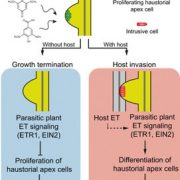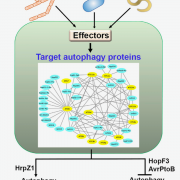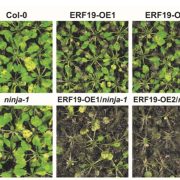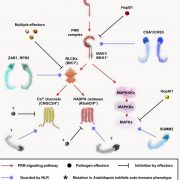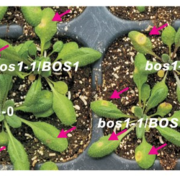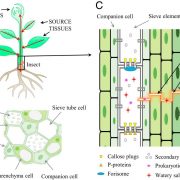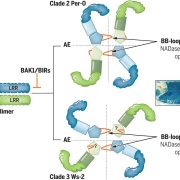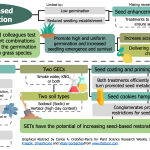Ethylene response factors 15 and 16 trigger jasmonate biosynthesis in tomato during herbivore resistance (Plant Physiol)
Crop damage and yield losses caused by herbivores have become major threats to global food security. 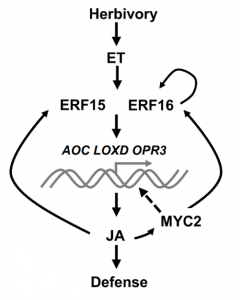 Upon wounding and herbivory, plants rapidly accumulate high levels of jasmonates (JA). However, the mechanism underlying how JA biosynthesis is triggered by herbivore attack remains unclear. It is therefore essential to identify key regulatory components involved in herbivory-induced JA signaling and study their role in resistance. Hu et al. showed that tomato defense against the cotton bollworm Helicoverpa armigera (H. armigera) were orchestrated by both JA and ethylene. The authors identified two ethylene-induced ETHYLENE RESPONSE FACTOR (ERF) genes namely, ERF15 and ERF16, as transcription factors able to bind to the promoters of JA biosynthesis genes and trigger downstream JA signaling. Interestingly, plants lacking ERF15 and ERF16 displayed increased susceptibility to H. armigera due to reduced JA levels and JA biosynthesis gene expression. Interestingly, the JA-activated MYC2 and ERF16 were also able to bind the promoter of ERF16 to activate its expression. Altogether, Hu et al. identified a new layer of tomato defense regulation against H. armigera where ethylene-responsive ERF15 and ERF16 act as positive regulators of the JA burst in tomato in response to H. armigera. (Summary by Sarah Courbier @Scourbier) Plant Physiol. 10.1093/plphys/kiaa089
Upon wounding and herbivory, plants rapidly accumulate high levels of jasmonates (JA). However, the mechanism underlying how JA biosynthesis is triggered by herbivore attack remains unclear. It is therefore essential to identify key regulatory components involved in herbivory-induced JA signaling and study their role in resistance. Hu et al. showed that tomato defense against the cotton bollworm Helicoverpa armigera (H. armigera) were orchestrated by both JA and ethylene. The authors identified two ethylene-induced ETHYLENE RESPONSE FACTOR (ERF) genes namely, ERF15 and ERF16, as transcription factors able to bind to the promoters of JA biosynthesis genes and trigger downstream JA signaling. Interestingly, plants lacking ERF15 and ERF16 displayed increased susceptibility to H. armigera due to reduced JA levels and JA biosynthesis gene expression. Interestingly, the JA-activated MYC2 and ERF16 were also able to bind the promoter of ERF16 to activate its expression. Altogether, Hu et al. identified a new layer of tomato defense regulation against H. armigera where ethylene-responsive ERF15 and ERF16 act as positive regulators of the JA burst in tomato in response to H. armigera. (Summary by Sarah Courbier @Scourbier) Plant Physiol. 10.1093/plphys/kiaa089


